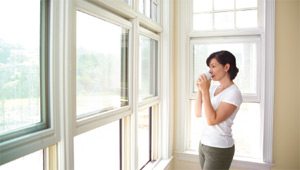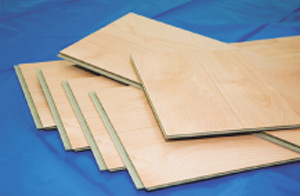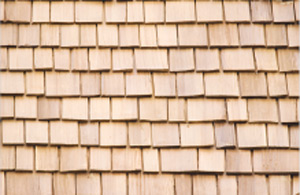
crib notes
By on Jun 18, 2008

From laminate to low-e, the descriptions of the features and finishes of your new home,
though romantically worded, are often difficult to decipher. These definitions will help you
crack the builder's code and make an informed new-home purchase.

Windows
Wood
A great insulator, can be stained or painted and is a
standard material for window frames for mostresidential homes. Exposure to the elements will
eventually cause paint to peel and moisture can cause rotthough with proper maintenance wooden window
frames can last for generations.
Vinyl
Inexpensive, durable, energy efficient and virtually
maintenance-free, vinyl is a popular choice for windowframes. Colour is continuous throughout the material so
scratches are undetectable. As they cannot be painted besure to choose a neutral colour; light shades are best as
darker hues will fade over time.
Fibreglass
Relatively new to the homebuilding industry
fibreglass window frames are extremely durable and low maintenance.More energy efficient than wood and
they can be painted, however all these perks arebalanced by their high price point.
Composite
combine the low-maintenance features of vinyl with
the flexibility to paint exposed wood window frames in thehome's interior.
Low-e and Argon Windows
transparent coating over the panes to reduce the amount
of heat lost through the glass and prevent ultraviolet raysfrom entering your home. These high-efficiency
windows will reduce your hydro bill and protect yourfurniture and flooring from fading. Argon windows
offer similar advantages. Double-paned with a layer ofargon-gas trapped in between to reduce conductivity
and the emission of UV rays.
Muntin Bars
An aesthetic feature, vertical and horizontal divides
are placed between the panes to create the look ofold colonial windows. Although attractive some
tests have shown that these additions can causefogging (due to the release of gasses from vinyl
muntins exposed to UV light) and can increase theinternal temperature of the window thus reducing
their energy efficiency.
Flooring
Engineered Hardwood Floors
Durable and practical engineered hardwood floors consist of a plywood
or high density fibre (HDF) core with a thin hardwoodouter layer (veneer). A great option for basements or
other areas where heat and moisture are a problem,unlike solid wood, these floors will not warp, can be
refinished (though not repeatedly) and are a fraction ofthe cost of hardwood floors.
Laminate
Similar to engineered hardwood floors, laminate floors
consist of a HDF core though the finish is aphotographic layer with the look of wood. The least
expensive option, these floors cannot be refinished butare easily installed and can be replaced.
Solid Hardwood Floors
floors can be refinished numerous times, are durable,
classic and add to the resale value of a home.

Roofing
Fibreglass Shingles
are the most popular choice for residential homes in
North America. Inexpensive, fibreglass shingles come in avariety of colours, are durable, low-maintenance and
are often guaranteed to last for more than 20 years.
Organic-mat Shingles
More expensive than fibreglass shingles though more durable,
they consist of a wood-derived mat coated in asphalt.Organic-mat shingles are more flexible in cold weather and
perform better than fibreglass shingles in tear and nail tests.Also guaranteed to last more than 20 years.
Composite Shake Shingles
conscience, this Canadian invention (from Guelph,
Ontario), is constructed from recycled materials such asused tires, plastics, flax and hemp fibres. Durable, mold,
mildew and insect resistant, these maintenance-freeshingles come with a transferable 50 year warranty.


